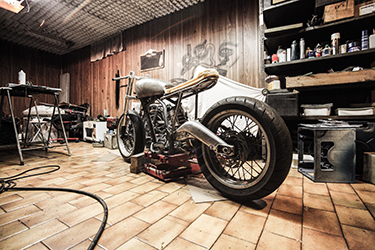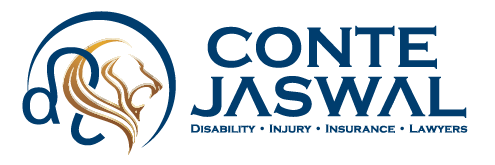The “No-Crash” Course For Motorcycle Safety
Spring is here, and that means, for many of us, it’s time to dust off the motorcycle and hit the road. I know you’re eager to get out there, but, for your sake and ours, please take into account all safety measures.
You don’t want that first ride of the year to be your last.
We know you’ve been riding for years, and you don’t need any motorcycle safety tips. But, for those veterans of the open road, it never hurts to saddle up like a beginner and buff up on road safety. Awareness of your limitations and your surroundings will help ensure a safe, enjoyable experience.
new video
Here are the top 7, easy-to-digest, motorcycle safety tips.
Top 7 Motorcycle Safety Tips
1. Three-Minute Road-Ready Inspection
 It’s exhilarating. The sky is blue, the ground is moist, there’s that dewy smell in the air that encompasses everything “life”. That’s spring. You toss open the garage door and tear the sheet off your old motorcycle. You’re just aching to feel that wind on your face. But before you blaze on out of there, take 3 minutes to conduct a quick road-ready inspection.
It’s exhilarating. The sky is blue, the ground is moist, there’s that dewy smell in the air that encompasses everything “life”. That’s spring. You toss open the garage door and tear the sheet off your old motorcycle. You’re just aching to feel that wind on your face. But before you blaze on out of there, take 3 minutes to conduct a quick road-ready inspection.
Be sure to take a walk around your bike and conduct a quick road-ready inspection. Check your tire pressure and tread depth, hand and foot brakes, headlights, turn signals and fluid levels. Also secure any cargo.
Check out this very comprehensive article on the “Three-Minute Check”.
2. Make Sure You’ve Got Your Helmet
 Head injuries are the number one cause of fatalities on the road. To prevent this is so simple it’s almost silly: WEAR A HELMET.Can’t stress it enough. Also, in Canada, in all provinces, it’s illegal to not wear a helmet. And you need to ensure you have a helmet which is certified by the Canadian Standards Association.
Head injuries are the number one cause of fatalities on the road. To prevent this is so simple it’s almost silly: WEAR A HELMET.Can’t stress it enough. Also, in Canada, in all provinces, it’s illegal to not wear a helmet. And you need to ensure you have a helmet which is certified by the Canadian Standards Association.
Ensure you get one which is certified as follows:
- U.S. DOT certification based on FMVSS 218
- SNELL M2010 certification
- ECE Regulation 22.05 certification
Check out this very informative article regarding Canadian standards for motorcycle helmets.
3. Arms and Legs Should Be Covered
Your arms and legs should be shielded from the anything from sunburns and road debris, to cuts and scrapes if in an accident. What is time-tested and true are denim, leather or heavy duty fabric. Another purpose for covering your arms and legs is to maintain body temperature and prevent dehydration.
Always remember to suit up before hitting the open road!

Motorcycle jackets cover what’s fragile and important: arms, back, ribs, organs. You’ll want a motorcycle-specific jacket. Motorcycle jackets fall into two categories: leather and textile. It’s up to you which one you choose, but the main purpose is safety.
For Pants, jeans that are either made from or include Kevlar panels offer slightly more abrasion resistance. Pants are available in leather or textile materials and should be equipped with CE-rated armor in the hips, shins and knees.
4. Wear Sturdy Boots
After you suit up, you’ll want to tie it all together with a pair of sturdy boots. They should cover at least to the ankle. Boots with oil-resistant, non-slip soles and good ankle support should be considered a minimum.
5. Wear Reflective Clothing
 Ensure you’re seen by all other drivers out there by outfitting yourself with retroreflective materials. Don’t assume you are visible to a driver. As a motorcyclist, it is your responsibility to make your presence known to drivers. Wear bright, contrasting protective clothing. If you wear dark clothing, wear a fluorescent vest.
Ensure you’re seen by all other drivers out there by outfitting yourself with retroreflective materials. Don’t assume you are visible to a driver. As a motorcyclist, it is your responsibility to make your presence known to drivers. Wear bright, contrasting protective clothing. If you wear dark clothing, wear a fluorescent vest.
Use headlights while riding on the highway, and use high beams rather than low beams. Also consider a modulating headlight.
Check out these 8 way you can make your motorcycle more visible.
6. Don’t Drink and Ride!
This should be a given. But the stats paint a different picture. In Saskatchewan, for instance, the rate of drunk driving is 683 incidents per 100,000 people in the province, which is more than double the national rate. And the numbers are worse in the northern territories.
Don’t become a statistic! Remember that you’re not the only one on the road. There are families with children that are put at risk because of choice to drink and drive.
Be smart.
7. Obey All Traffic Laws

Always be aware of the rules of the road. But, sometimes, if you’re traveling, it’s difficult to know exactly what each province’s traffic laws are. Here is a great site which details traffic laws in Canada by province.
If You’ve Been Hurt In A Motorcycle Accident, You Can Count on Conte & Associates
There is no risk in consulting a personal injury lawyer. If you’ve been involved in a motorcycle accident, priorities change rapidly. It’s difficult to know exactly what to do, or where to turn. If you have legal questions that need answering, don’t hesitate to contact a knowledgeable, compassionate and trustworthy law firm. Every injury victim deserves to know their legal rights.
At Conte & Associates Personal Injury Lawyers, we know the hardship you’re going through, and we will fight to get you the settlement you deserve. Conte & Associates Personal Injury Lawyers specializes in helping people with serious orthopedic, brain or spinal cord injuries.
We work in conjunction with the best medical experts in Ontario including neurologists, neuropsychiatrists, neuropsychologists, psychologists, case managers and occupational therapists. We ensure that your condition is properly and fully assessed.
Based in Vaughan, Conte & Associates works with clients in Vaughan and in the surrounding cities of: Thornhill, Woodbridge, Concord, Kleinberg, Maple and Richmond Hill.
Contact Conte & Associates at 1-877-614-0008 for all your legal needs.
Be sure to Like us on Facebook and Follow us on Instagram @contelawyers




